
Buckwheat flour is a popular gluten-free option used in baking and cooking for its nutty flavor and dense texture.
However, suppose you’re out of buckwheat flour or looking for a different option.
Many substitutes can achieve similar results, whether you need a gluten-free or a more traditional option.
These substitutes provide various textures, flavors, and nutritional benefits, from Almond Flour to Teff Flour.
Whether you’re making pancakes, bread, or baked goods, these 17 flours will help you create delicious dishes without sacrificing the key elements of buckwheat flour.
Best Substitutes for Buckwheat Flour
1. Almond Flour
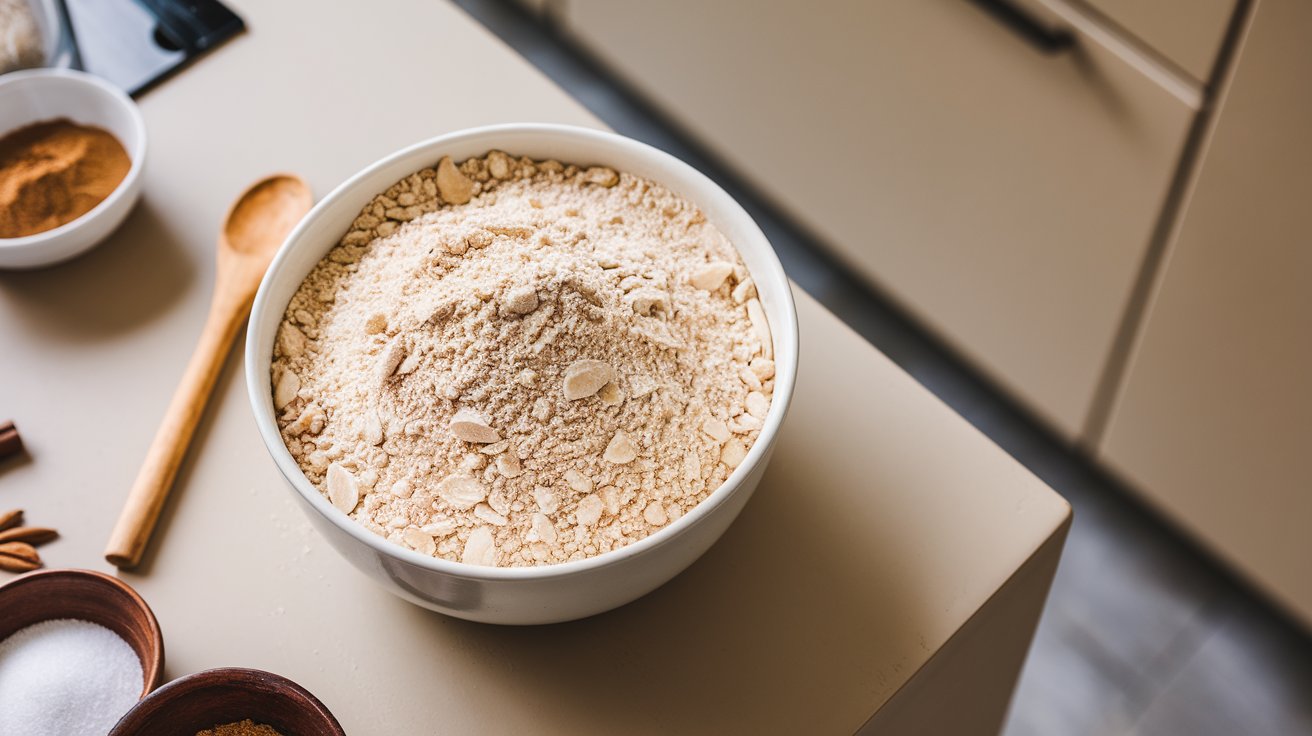
Almond Flour is a popular gluten-free substitute for buckwheat flour, made from finely ground almonds.
It adds a subtle, nutty flavor and is excellent for baking cakes, cookies, and bread.
Almond flour is also rich in healthy fats and proteins, making it a nutritious alternative.
- Texture: Fine and slightly moist.
- Best Uses: Cookies, cakes, bread, and pancakes.
- Why It’s a Good Substitute: Its nutty flavor and gluten-free properties make it a great option for those avoiding wheat-based flours.
2. Oat Flour

Oat Flour is another gluten-free substitute that works well in various baked goods.
It is made from ground oats, has a mild, slightly sweet flavor, and adds a soft texture to your recipes.
Oat flour is also fiber-rich, making it a healthy option for many dishes.
- Texture: Soft and powdery.
- Best Uses: Muffins, cookies, pancakes, and bread.
- Why It’s a Good Substitute: Its mild flavor and soft texture make it a versatile and nutritious alternative to buckwheat flour.
3. Quinoa Flour
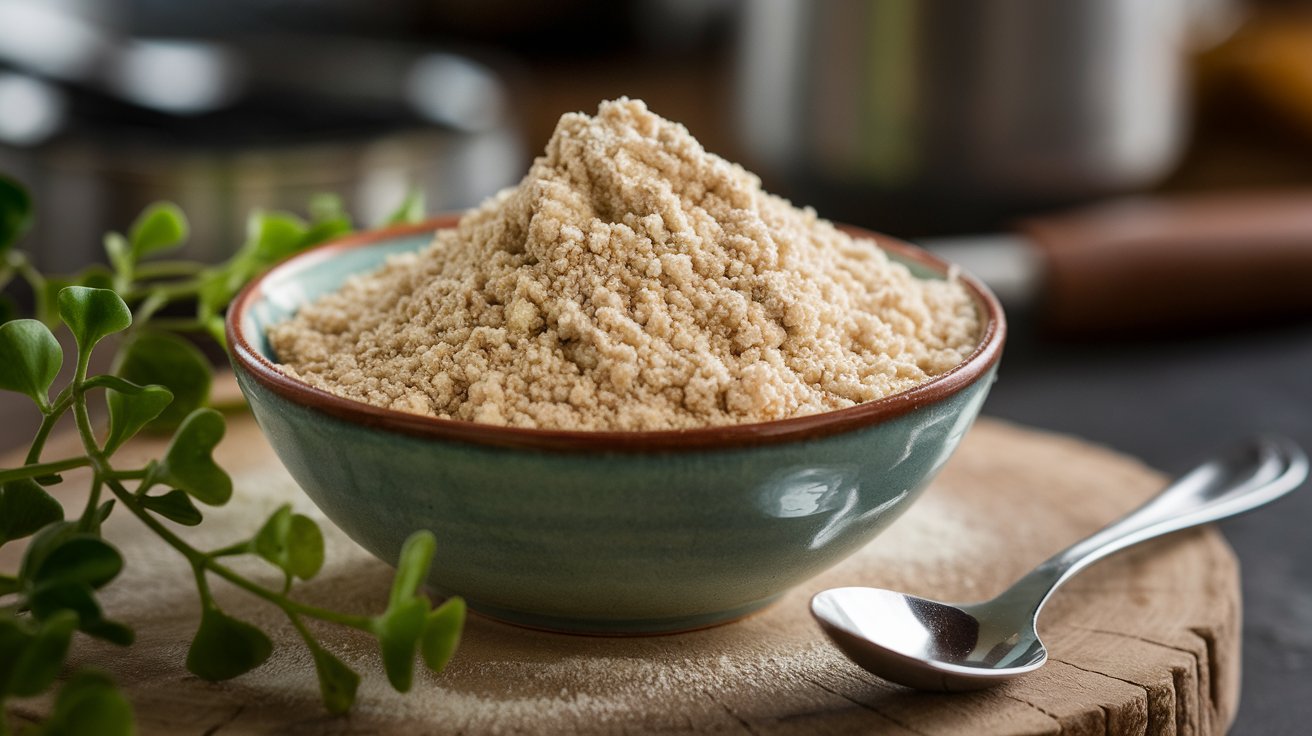
Quinoa Flour is made from ground quinoa seeds and provides a slightly earthy and nutty flavor, similar to buckwheat.
It is gluten-free and packed with protein and essential amino acids.
Quinoa flour works well in sweet and savory dishes, giving your recipes a nutritional boost.
- Texture: Fine and slightly grainy.
- Best Uses: Bread, pancakes, and cookies.
- Why It’s a Good Substitute: Its high protein content and similar nutty flavor make quinoa flour a great alternative in gluten-free baking.
4. Whole Wheat Flour
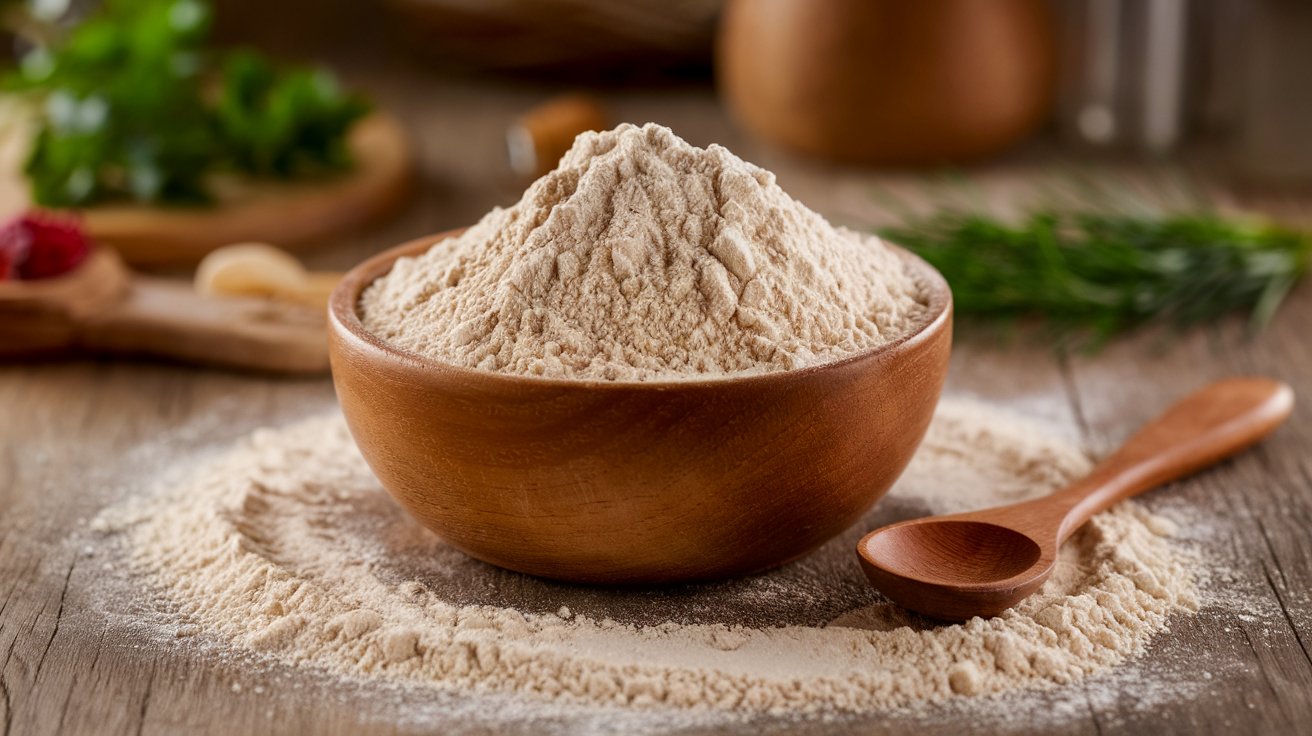
Whole Wheat Flour is a traditional flour option with a denser texture and rich flavor.
Though not gluten-free, it can replace buckwheat flour in many recipes that require hearty, fiber-rich flour.
It’s commonly used in bread and baked goods for a wholesome, nutty flavor.
- Texture: Coarse and hearty.
- Best Uses: Bread, muffins, and pancakes.
- Why It’s a Good Substitute: Whole wheat flour offers a similar density and nutritional value, making it a good alternative for heartier baked goods.
5. Brown Rice Flour
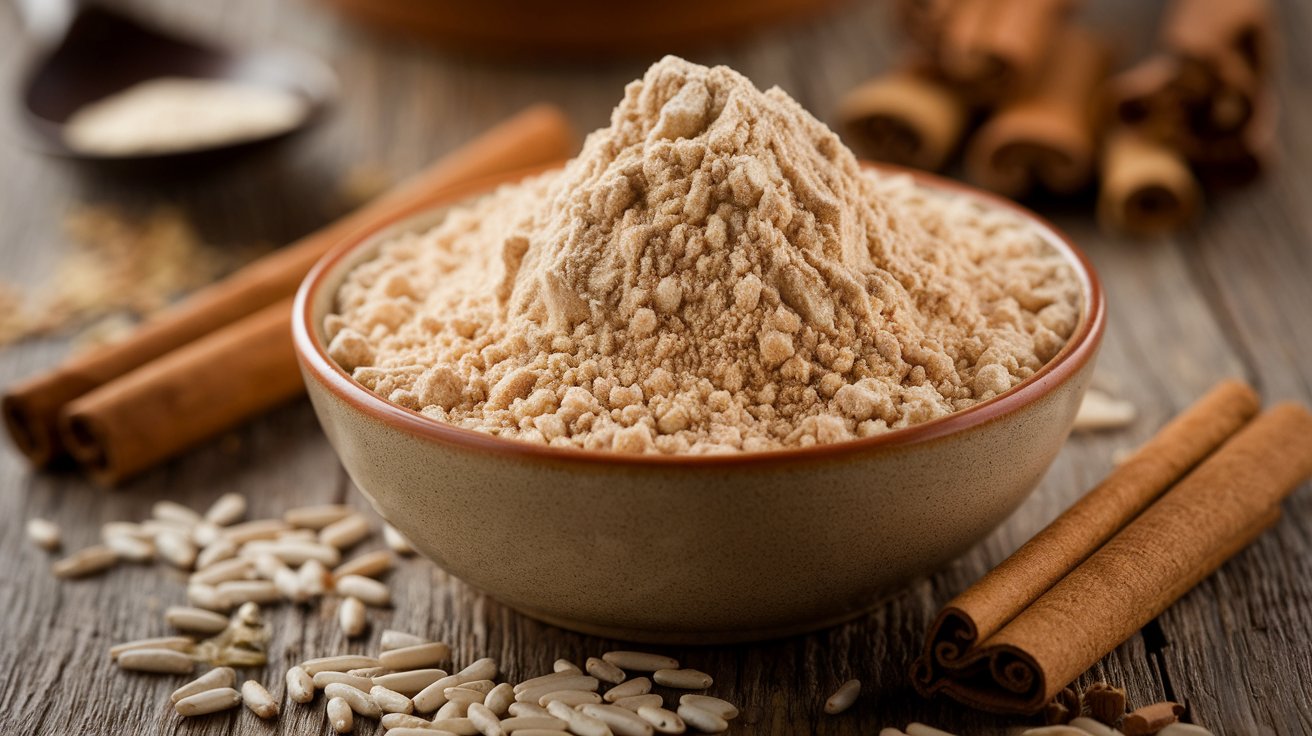
Brown Rice Flour is a gluten-free substitute with a mild flavor and fine texture.
It works well in gluten-free baking and adds a slightly chewy consistency to recipes.
Brown rice flour is also rich in fiber and antioxidants, making it a healthy alternative to buckwheat flour.
- Texture: Fine and slightly gritty.
- Best Uses: Cookies, cakes, and bread.
- Why It’s a Good Substitute: Its mild flavor and gluten-free properties make it suitable for those looking for a light and nutritious flour option.
6. Sorghum Flour

Sorghum Flour is a gluten-free flour with a mild, slightly sweet flavor.
It works well with other flour in baked goods and adds a light texture to bread, pancakes, and muffins.
Sorghum is high in fiber, antioxidants, and essential nutrients, making it nutritious.
- Texture: Fine and powdery.
- Best Uses: Bread, pancakes, and muffins.
- Why It’s a Good Substitute: Sorghum flour’s mild flavor and nutritional benefits make it a versatile alternative in gluten-free recipes.
7. Teff Flour

Teff Flour is a gluten-free flour made from tiny teff grains, often used in Ethiopian cuisine.
It has a slightly nutty and earthy flavor that adds depth to baked goods.
Teff flour is high in protein, fiber, and calcium, making it a nutritious and hearty substitute for buckwheat flour.
- Texture: Fine and slightly grainy.
- Best Uses: Pancakes, bread, and cookies.
- Why It’s a Good Substitute: Its rich flavor and nutritional content make teff flour a great alternative in savory and sweet dishes.
8. Coconut Flour

Coconut Flour is a gluten-free, low-carb flour made from dried coconut meat.
It has a sweet coconut flavor and absorbs much moisture, so recipes often require additional liquid.
Coconut flour is popular in paleo and low-carb diets and works well in baked goods.
- Texture: Fine and dry, absorbs moisture.
- Best Uses: Cakes, cookies, and muffins.
- Why It’s a Good Substitute: Its sweet flavor and ability to absorb moisture make coconut flour ideal for gluten-free and low-carb recipes.
9. Chickpea Flour

Chickpea Flour (gram flour or garbanzo flour) is a gluten-free flour made from ground chickpeas.
It has a slightly nutty, earthy flavor and is commonly used in savory dishes like cakes, flatbreads, and pancakes.
Chickpea flour is also rich in protein and fiber.
- Texture: Fine and dense.
- Best Uses: Flatbreads, pancakes, and savory dishes.
- Why It’s a Good Substitute: Its dense texture and high protein content make it a versatile substitute for buckwheat flour in savory dishes.
10. Millet Flour

Millet Flour is a gluten-free flour with a mild, slightly sweet flavor.
It’s light texture and works well in baked goods with other flours.
Millet flour is rich in magnesium and fiber, making it a healthy alternative to buckwheat flour.
- Texture: Light and powdery.
- Best Uses: Bread, pancakes, and muffins.
- Why It’s a Good Substitute: Its mild flavor and light texture make it ideal for gluten-free baking when paired with other flours.
11. Cornmeal

Cornmeal is a coarser flour from ground corn commonly used in bread, muffins, and other baked goods.
It provides a slightly sweet, earthy flavor and a gritty texture.
While not gluten-free, cornmeal can be combined with other flour to replace buckwheat flour in many recipes.
- Texture: Coarse and gritty.
- Best Uses: Cornbread, muffins, and pancakes.
- Why It’s a Good Substitute: Its earthy flavor and coarse texture make it a suitable substitute in heartier baked goods.
12. Tapioca Flour

Tapioca Flour is a gluten-free flour made from the starch of the cassava plant.
It is commonly used as a thickening agent in sauces and soups but can also be combined with other baking flours.
Tapioca flour has a neutral flavor and adds a light, chewy texture to recipes.
- Texture: Fine and powdery.
- Best Uses: Gluten-free baking, sauces, and soups.
- Why It’s a Good Substitute: Its neutral flavor and ability to add chewiness make it a great option for gluten-free baking.
13. Spelt Flour

Spelt Flour is an ancient grain flour with a slightly sweet and nutty flavor.
While it contains gluten, spelled flour is often used as a substitute for wheat flour in baking.
It’s a nutritious option adds a hearty texture to bread, muffins, and other baked goods.
- Texture: Coarse and hearty.
- Best Uses: Bread, muffins, and cookies.
- Why It’s a Good Substitute: Its nutty flavor and hearty texture make spelled flour a good alternative for denser baked goods.
14. All-Purpose Flour
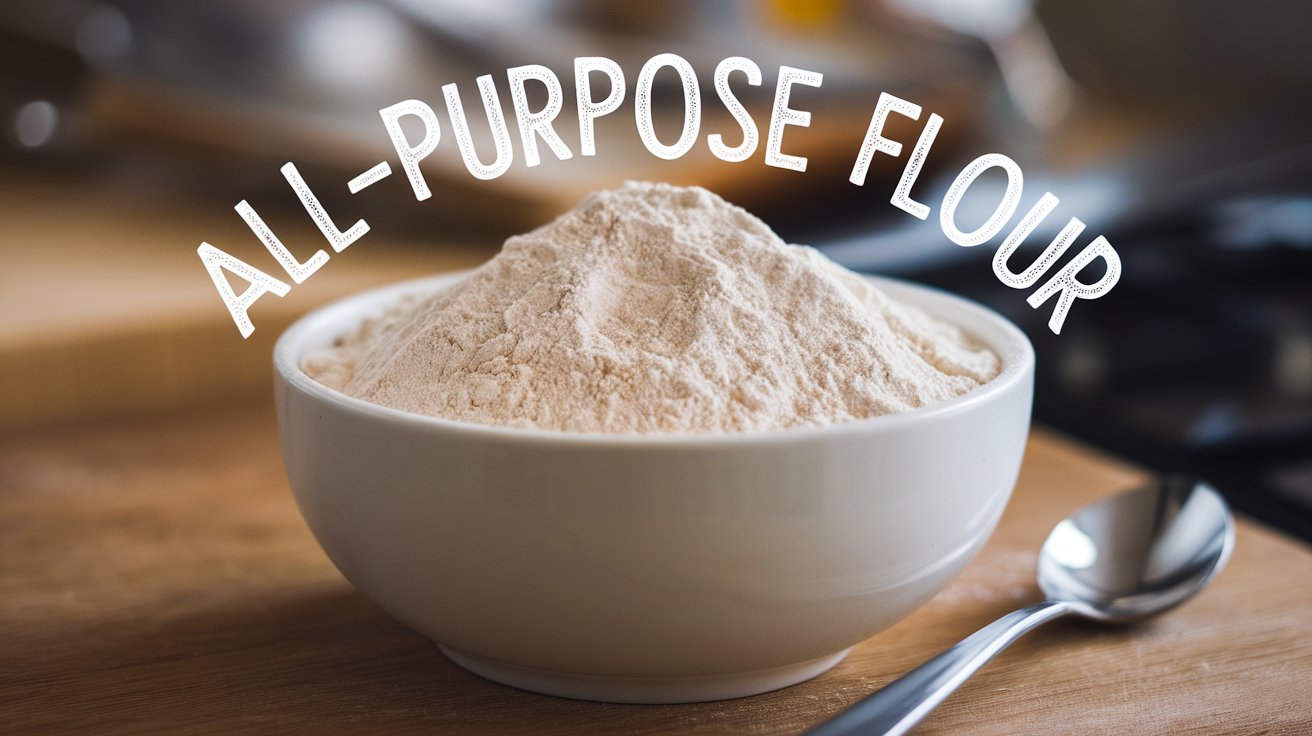
All-purpose flour is versatile and can be used in almost any recipe.
While it contains gluten, it can replace buckwheat flour in most baked goods, offering a lighter texture and neutral flavor.
All-purpose flour is commonly used in bread, cookies, and cakes.
- Texture: Fine and smooth.
- Best Uses: Cookies, bread, and cakes.
- Why It’s a Good Substitute: Its versatility and neutral flavor make it a convenient replacement for buckwheat flour in many recipes.
15. Amaranth Flour

Amaranth Flour is a gluten-free flour made from amaranth seeds.
It has a slightly nutty, earthy flavor and works well in sweet and savory recipes.
Amaranth flour is rich in protein and fiber, making it a nutritious substitute for buckwheat flour in various dishes.
- Texture: Fine and slightly grainy.
- Best Uses: Bread, pancakes, and muffins.
- Why It’s a Good Substitute: Its similar texture and nutritional content make amaranth flour a great gluten-free alternative.
16. Potato Flour
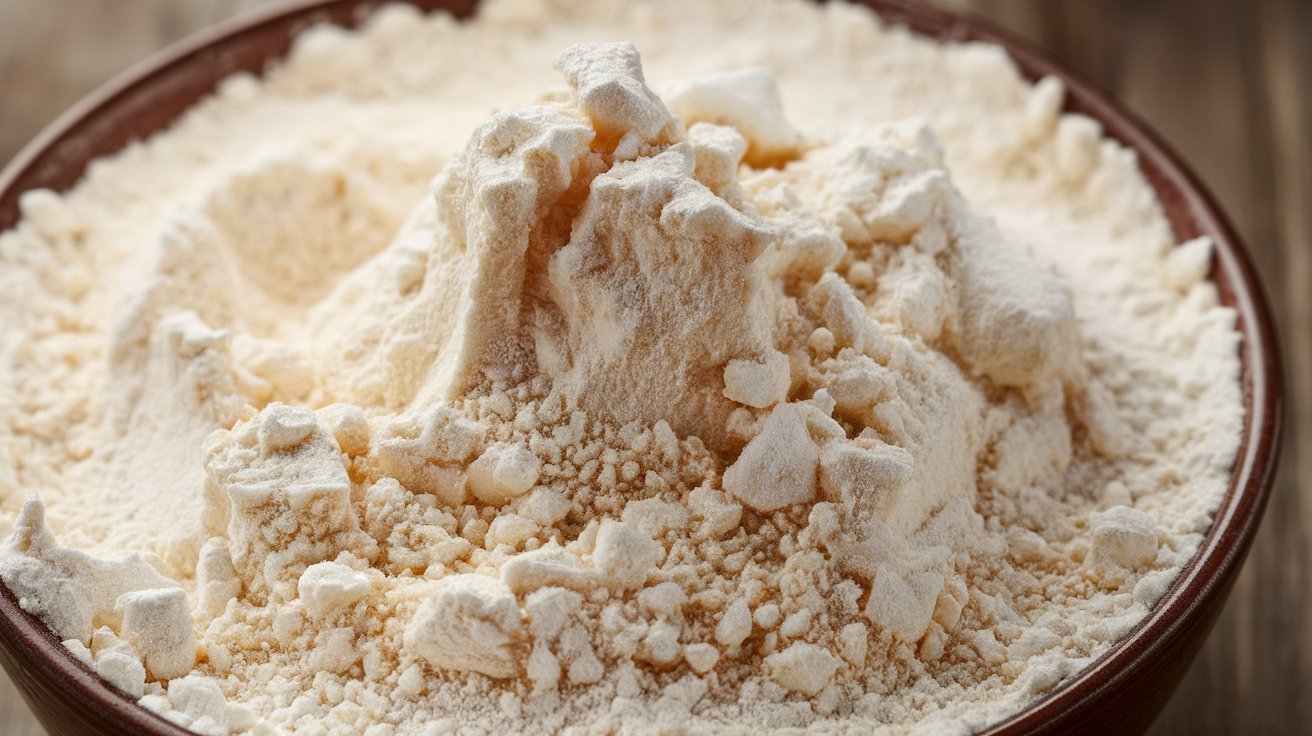
Potato Flour is made from ground potatoes and is a gluten-free option commonly used as a thickening agent or in baking.
It has a neutral flavor and adds moisture and chewiness to baked goods.
Potato flour works best when combined with other flours in recipes.
- Texture: Fine and starchy.
- Best Uses: Gluten-free baking, sauces, and soups.
- Why It’s a Good Substitute: Its ability to add moisture and chewiness makes it ideal for gluten-free baking.
17. Barley Flour
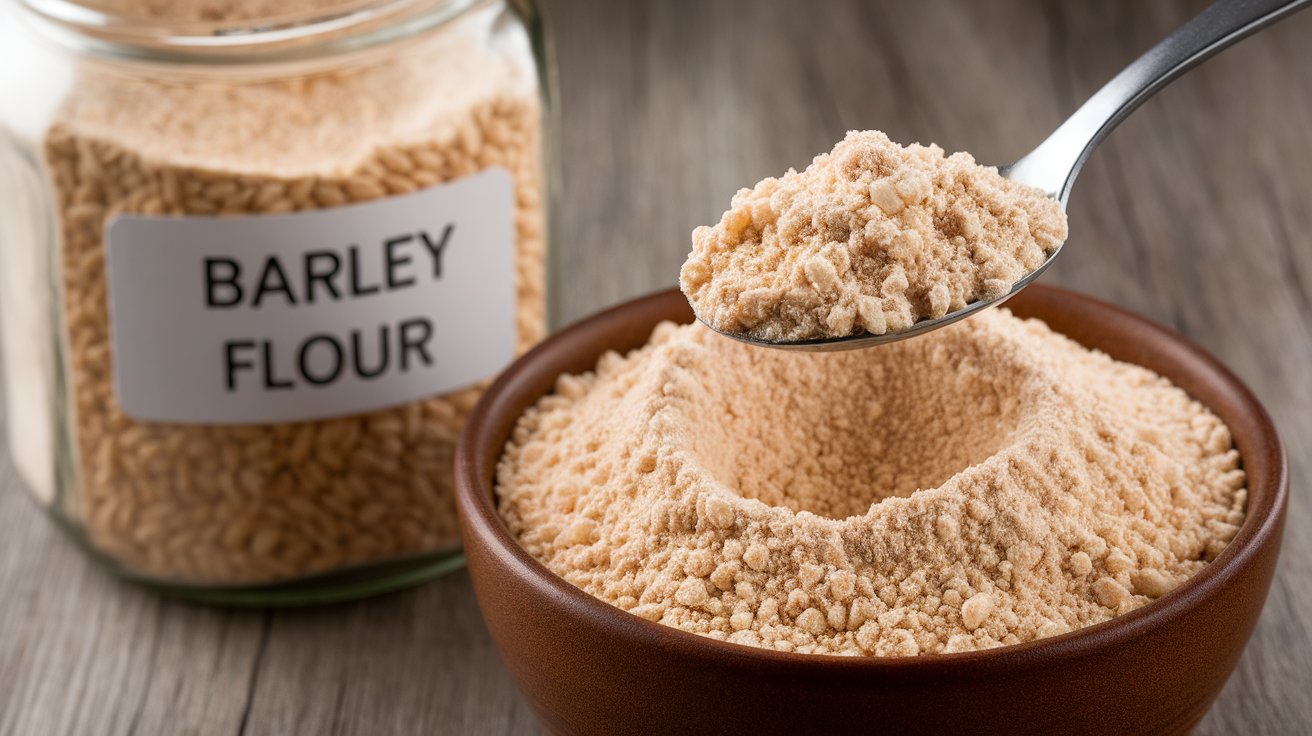
Barley Flour is made from ground barley and has a mild, nutty flavor.
It contains gluten and works well in hearty baked goods like bread and muffins.
Barley flour adds a slightly chewy texture and pairs well with other flour in recipes.
- Texture: Coarse and slightly chewy.
- Best Uses: Bread, muffins, and cookies.
- Why It’s a Good Substitute: Its nutty flavor and hearty texture make barley flour a good alternative for dense baked goods.
Conclusion
Whether you’re looking for a gluten-free alternative like Almond Flour or a more traditional option like Whole Wheat Flour, these substitutes for buckwheat flour offer a wide range of textures and flavors.
From the protein-packed Quinoa Flour to the nutty richness of Spelt Flour, each substitute brings unique qualities to your recipes.
Depending on your dietary needs and the dish you’re preparing, these 17 flours provide plenty of options to replace buckwheat flour while maintaining the integrity of your baked goods.
